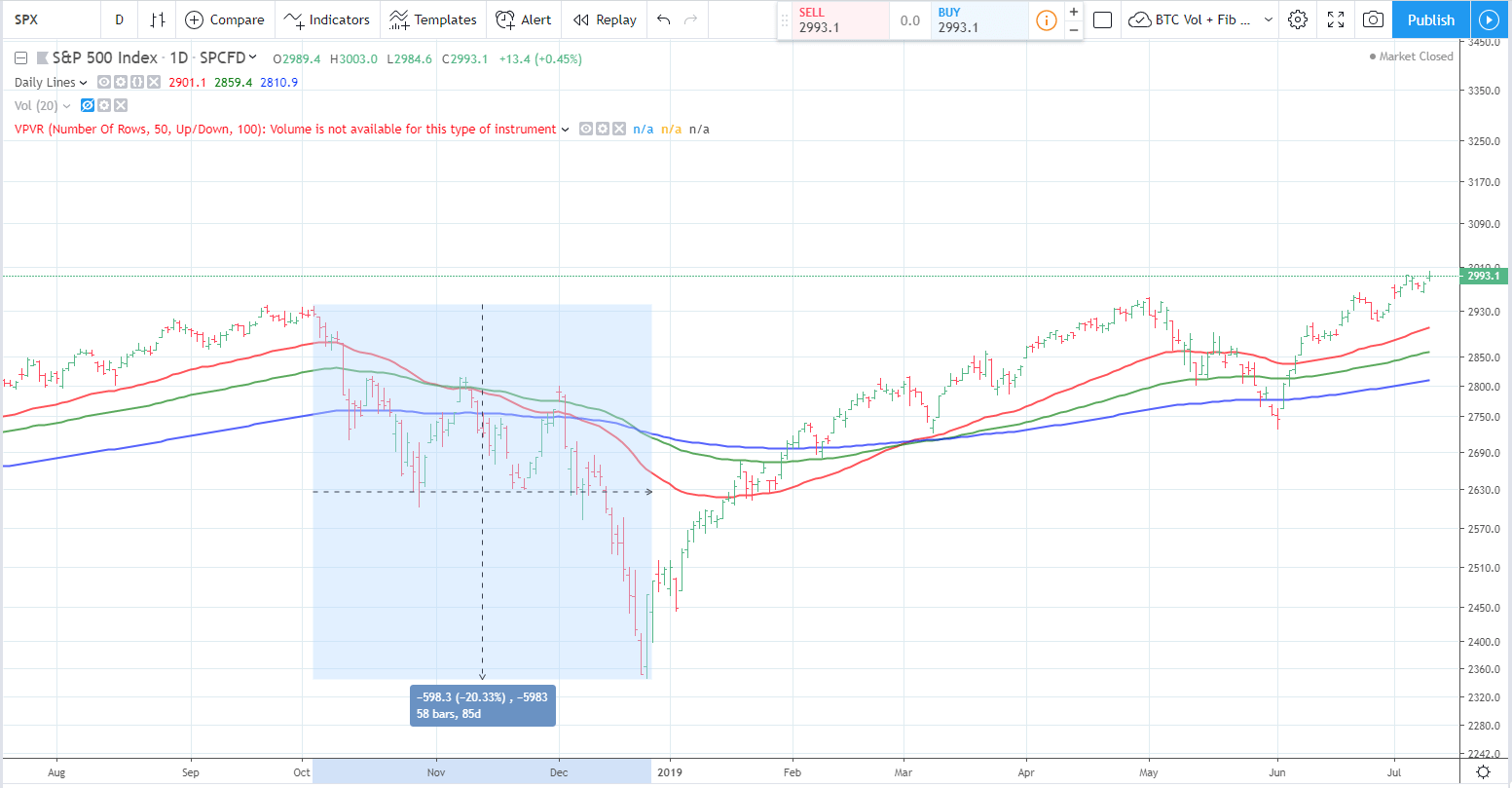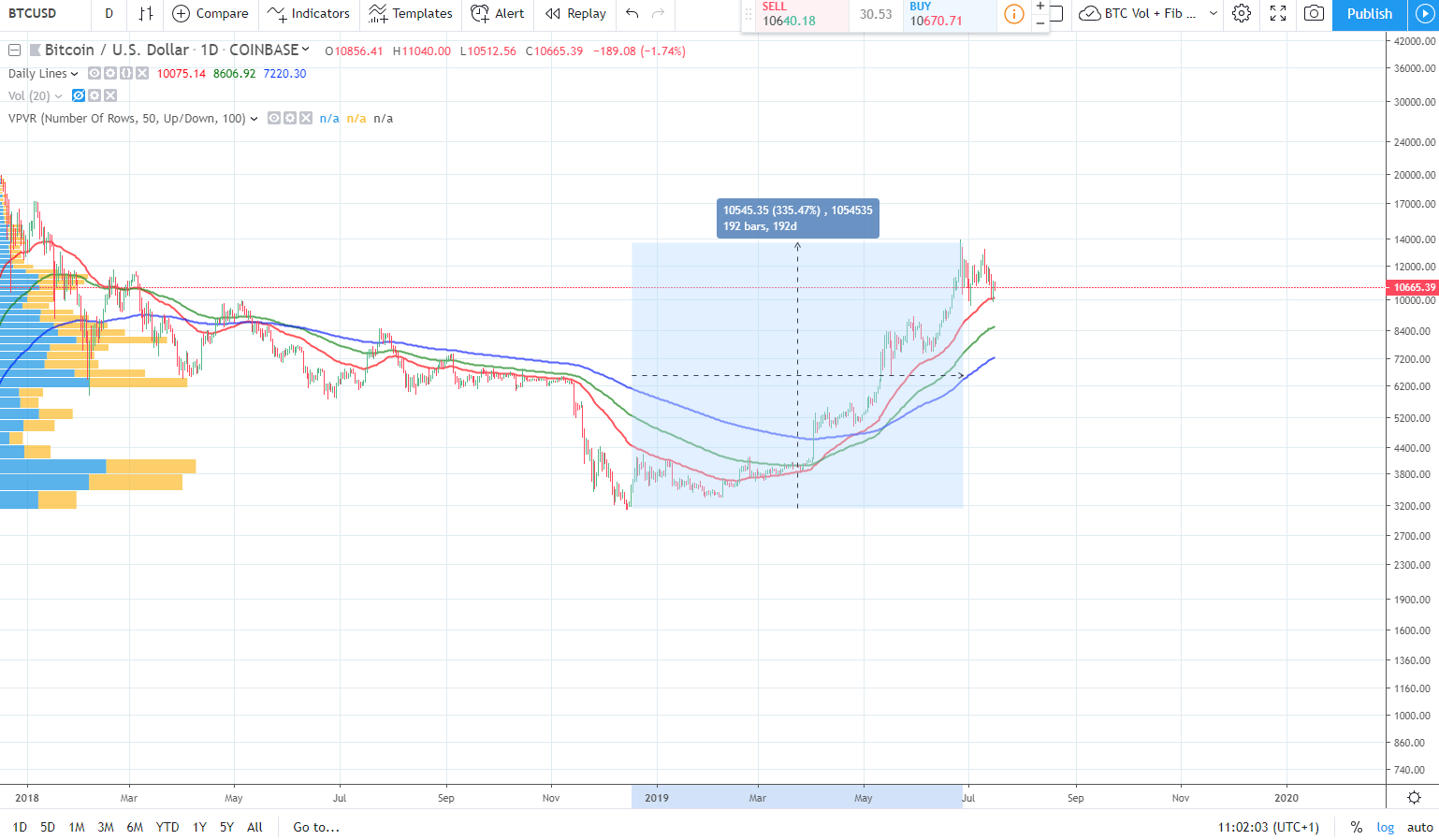During 2019, Bitcoin has already briefly touched $14,000. Considering we were at around $6,000 just a few months back, this massive boost has been quite impressive, making Bitcoin one of the best-performing assets of the year.
Something I haven’t seen being discussed enough though is the impact a bearish global stock market could have on the price of Bitcoin.
A global recession – or at least a big stock market dip – could lead to a much more impressive crypto bull run than previously expected.
Traditional financial markets

Let’s take a look at the US S&P 500 index. I would argue that if the S&P 500 were to drop by more than 25%, we could see Bitcoin mooning past all-time highs faster than ever before.
If you don’t remember what happened during the last time there was a sudden crash on the S&P 500, let me refresh your memory.
During about two months from November 2018 to the end of the same year, the market crashed about 20%. However, the market did not enter a full recession as there were a number of alternative places investors could keep their money.
House prices skyrocketed during the same period as investors and traders took their profits to new markets. Bond markets and other alternative financial markets – like cryptocurrencies – did not seem interesting at the time, with cryptocurrency in particular suffering from a long bear market.
The S&P 500 soon began to boom again thanks to quantitative easing. Due to the Cantillon Effect, most of the newly minted fresh cash was going directly to financial institutions who were supporting companies in financing their buy-backs. This is a simple way to push the market upwards by “lending” money to companies to purchase their own stock in order to push price upwards (as the supply gets more and more restricted).
So why didn’t some of the money go into the Bitcoin market during the last S&P 500 crash?
Bitcoin

If we look at the period preceding the fall of the S&P 500 in the Bitcoin chart above, what conclusion can we draw?
To me it seems quite obvious. Would you expect investors and traders to move into a market that was free-falling? Sure, we can say most “crypto-experts” called the bottom at around $3,000, but from a traditional investor’s perspective, this would be a really bad time to come into the Bitcoin market.
Their investment could easily lose 50% in a couple of days if previous price history is anything to go by. The chart above shows that in about a year, BTC lost close to 85% of its total market value.
Bitcoin was in a pretty gloomy place at the time, and therefore it couldn’t capitalise on the S&P 500 crash as traditional traders and investors saw it as too risky and moved their money elsewhere.
Also, let’s not forget that at the time, a great deal of institutional investors like Grayscale were reporting heavy losses regarding their crypto-assets.
Investors and traders often say that “the trend is your friend until the end”. The chance that institutional money was going to flow from traditional stock markets into Bitcoin at the end of 2018 was just unrealistic.
However, what would happen if the S&P 500 was to crash today?
Taking gains into crypto

Since it bottomed out at around $3,000, Bitcoin has already grown by 335%. To any traditional investor, this looks like a market that has recovered from a crash and is now ready to start a new bull cycle.
I believe that when the next financial crash hits, assuming BTC is still following a clear bullish trend, there will be hoards of traditional investors and traders who will join the cryptosphere – mostly through Bitcoin.
Do you agree with my analysis? What other factors could impact Bitcoin’s price in the long term?
Share your thoughts down below.
Safe trades!
Disclaimer: The views and opinions expressed by the author should not be considered as financial advice. We do not give advice on financial products.
